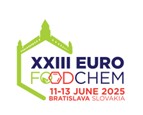Scientific journal
Journal of Food and Nutrition Research
Summary No. 1 / 2023
Gürbüz, M. – Çatak, J. – Ugur, H. – Demir, B. – Beceren, Y. – Yaman, M.
Assessment of in vitro bioaccessibility of pyridoxal, pyridoxine and pyridoxamine forms of vitamin B6 in various vegetables
Journal of Food and Nutrition Research, 62, 2023, No. 1, s. 90-98
Mustafa Yaman, Department of Molecular Biology and Genetics, Faculty of Engineering and Natural Sciences, Istanbul Sabahattin Zaim University, Halkali Central Campus, Halkali, Kücükcekmece, 34303 Istanbul, Turkey. E-mail: mustafayaman1977@gmail.com
Original article
Received 13 January 2023; 1st revised 3 March 2023; accepted 6 March 2023, published online 16 March 2023.
Summary: Vitamin B6 is defined as the sum of pyridoxal, pyridoxine and pyridoxamine vitamers. The content of each form is quite different in various types of vegetables. This investigation aimed to determine the amount and bioaccessibility of pyridoxal, pyridoxine and pyridoxamine vitamers of vitamin B6 in various vegetables. In the study, it was determined that the total vitamin B6 content in various vegetables (carrots, broccoli, brussels sprouts, zucchini, potatoes, cucumbers, red pepperoni, tomatoes, chard, green peppers, parsley, spinach, onions, green beans, leek and curly lettuce) ranged from 0.25 mg·kg-1 to 5.93 mg·kg-1. The average proportion of pyridoxal, pyridoxine and pyridoxamine forms in vegetables was 25.9 %, 50.3 %, and 23.8 %, respectively. However, these proportions were 34.7 %, 34.7 % and 14.8 % in green leafy vegetables. The bioaccessibility of total vitamin B6 in samples ranged from 17 % to 69 %, and the average bioaccessibility of pyridoxal, pyridoxine and pyridoxamine vitamers was 43 %, 34 % and 51 %, respectively. The lowest and highest average bioaccessibility was determined for pyridoxine and pyridoxamine vitamers, respectively.
Keywords: bioaccessibility; pyridoxal; pyridoxine; pyridoxamine; vegetables; vitamin B6
Download:
(pdf, 351.65 Kb, 641x)










